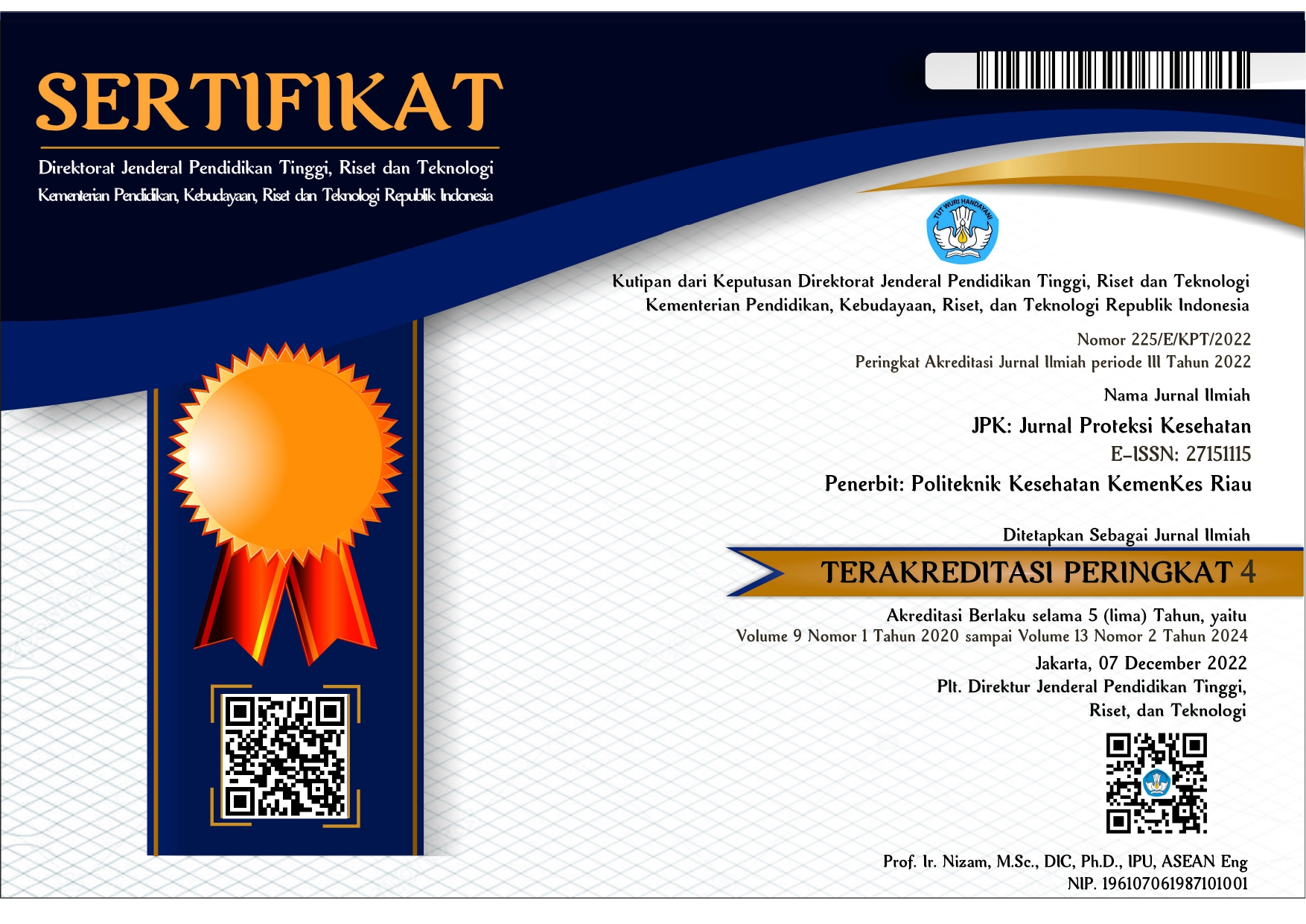Literature Review: Multicomponent Crystal of Active Pharmaceutical Ingredients to Improve the Solubility
Abstract
The purpose of this review was to discuss abouts active pharmaceutical ingredients (API), formulations of drugs that are poorly soluble in water using various coformers and various methods of forming multicomponent crystals to increase the solubility of API. The formula used is equivalent in molecular weight between the active pharmaceutical ingredients (API) and coformers, using solvent evaporation and solvent drop grinding methods. A series of characterizations using X-ray Diffraction (XRD), differential scanning calorimetry (DSC), Fourier transform infrared (FTIR) and Scanning electron microscopy (SEM) to confirm the formation of multicomponent crystals. The analysis from the results of the research show an increase in the solubility of API in water, that is 1.3 up to 115 times compared to intactsubstances.
References
[2] Kalepu, S & Nekkanti, V. Insoluble drug delivery strategies: Review of recent advances and business prospects. Acta Pharmaceutica SiNICa B, 5(5), 442–453. 2015.
[3] Chavda, P. V. Biological Classification System (BCS); with a New Perspective. MOJ Bioequivalence & Bioavailability, 3(4), 108–109. 2017.
[4] Fernandes, G. J., Kumar, L., Sharma, K., Tunge, R & Rathnanand, M. A Review on Solubility Enhancement of Carvedilol—a BCS Class II Drug. Journal of Pharmaceutical Innovation, 13(3), 197–212. 2018.
[5] Bazzo, G. C., Pezzini, B. R & Stulzer, H. K. Eutectic mixtures as an approach to enhance solubility, dissolution rate and oral bioavailability of poorly water-soluble drugs. International Journal of Pharmaceutics, 588, 119741. 2020.
[6] Dwichandra Putra, O., Yonemochi, E & Uekusa, H. Isostructural Multicomponent Gliclazide Crystals with Improved Solubility. Crystal Growth and Design, 16(11), 6568–6573. 2016.
[7] Douroumis, D & Fahr, A. Drug Delivery Strategies for Poorly Water-Soluble Drugs. Drug Delivery Strategies for Poorly Water-Soluble Drugs, 1481–1500. 2013.
[8] Thakuria, R., Delori, A., Jones, W., Lipert, M. P., Roy, L & Rodríguez-Hornedo, N. Pharmaceutical cocrystals and poorly soluble drugs. International Journal of zPharmaceutics, I453(1), 101–125. 2013.
[9] Sareen, Swati., Joseph, Lincy & Mathew, G. Improvement in solubility of poor water-soluble drugs by solid dispersion. International Journal of Pharmaceutical Investigation, 2(1), 2012.
[10] Savjani., Ketan, T., Gajjar, A. K.; Savjani, Jignasa K. Drug Solubility: Importance and Enhancement Techniques. ISRN Pharmaceutics, 1–10. 2012.
[11] Wei-Guo Dai., Liang C. D., Yan-Qiu Song. Nanosizing of a drug/carrageenan complex to increase solubility and dissolution rate, 342(1-2), 201–207. 2007.
[12] Deshmukh, A & Tiwari, K, J. Solubility Enhancements Techniques For Poorly Water-Soluble Drugs. International Journal of Pharmaceutical Sciences and Nanotechnology. Vol. 10. Issue 3. 2017.
[13] Duggirala, N., Zaworotko, M., Perry, M & Almarsson, Ő. Pharmaceutical Cocrystals: Along the Path to Improved Medicines. Chem. Commun., 1-3. 2015.
[14] Zaini, E., Afriyani., Fitriani, L., Ismed, F., Horikawa, A & Uekusa, H. Improved Solubility and Dissolution Rates in Novel Multicomponent Crystals of Piperine with Succinic Acid. Scientia Pharmaceutica. 88, 21. 2020.
[15] Sopyan, I. Kokristalisasi : Modifikasi Padatan Farmasi Sebagai Strategi Perbaikan Sifat Fiskokimia Obat. Yogyakarta : Deepublish. 2020.
[16] Sari, Y. N., Zaini, E & Ismed, F. Peningkatan Laju Disolusi Piperin dengan Pembentukan Multikomponen Kristal Menggunakan Asam Nikotinat. Jurnal Sains Farmasi & Klinis. (6). 180-185. 2019.
[17] Jessica, A., Agustina, A., Fitriani, L & Zaini, E. Pembentukan dan Karakterisasi Multikomponen Kristal Aseklofenak–Asam Suksinat dengan Metode Solvent Drop Grinding. Jurnal Sains Farmasi & Klinis. (9). 134-145. 2022.
[18] A Jessica, A., Naura, R., Hasanah, U., Zaini, E & Fitriani, L. Pembentukan Multikomponen Kristal Piperin Dan Kuersetin. Journal Of Pharmacy and Science. (4). (2). 1-11. 2021.
[19] Alatas, F., Azizsidiq, F. A., Sutarna, T. H., Ratih, H & Soewandi, S, N. Perbaikan Kelarutan Albendazol Melalui Pembentukan Kristal Multikomponen dengan Asam Malat. Jurnal Farmasi Galenika. 6 (1). 114-123. 2020.
[20] Umar, S., Bandaro, N. P. Anggraini, D & Zaini, E. Multicomponent Crystal of Fenofibric Acid- Saccharin: Characterization and Antihyperlipidemic Effectiveness. Advances in Health Sciences Research, volume 40. 2021.
[21] Fitriani, L., Firdaus, W. A., Sidadang, W., Rosaini, H., Putra, O. D., Oyama, H., Uekusa, H & Zaini, E. Improved Solubility and Dissolution Rate of Ketoprofen by the Formation of Multicomponent Crystals with Tromethamine. Crystals. 12, 275. 2022.
[22] Yuliandra, Y., Hutabarat, L. J., Ardila, R., Octavia, M. D & Zaini, E. Enhancing solubility and antibacterial activity using multi-component crystals of trimethoprim and malic acid. Pharmacy Education, 21(2) 296 – 304. 2021.
[23] Shane, N. L. J., Pai, A., Pai, G., Pai, V., Sg, V & Sathyanarayana, M. B. Solubility enhancement of ticagrelor by co-crystal technology: Preparation, solid state characterization and solubility studies. Latin American Journal of Pharmacy, 38(10), 2051-2056. 2019.
[24] Wicaksono, Y., Setyawan, D & Siswandono. Multicomponent Crystallization Of Ketoprofen-Nicotinamide For Improving The Solubility And Dissolution Rate. Chemistry Journal Of Moldova. General, Industrial and Ecological Chemistry, 13(2), 74-81. 2018.
[25] Ainurofiq, A., Mauludin, R., Mudhakir, D., Umeda, D., Soewandhi, S. N., Putra, O. D & Yonemochi, E. Improving mechanical properties of desloratadine via multicomponent crystal formation. European Journal of Pharmaceutical Sciences, 111, 65–72. 2018.
[26] Zhang, Y. A., Cui-Min, Y., Bai-Wang, S & Lin-Xuan, W. Bromhexine and its fumarate salt: Crystal structures, Hirshfeld surfaces and dissolution study. Journal of Molecular Structure. 1233. 2021.
[27] Aggarwal. A. K & Gupta, M. Solubility and solution stability studies of different amino acid prodrugs of bromhexine. Drug Development and Industrial Pharmacy, 38(11), 1319–1327. 2012.
[28] Johri, R. K & Zutshi, U. An Ayurvedic formulation ‘Trikatu’ and its constituents. Journal of Ethnopharmacology, 37(2), 85–91. 1992.
[29] Tasleem, F., Azhar, I., Ali, S. N., Perveen, S & Mahmood, Z. A. Analgesic and anti-inflammatory activities of Piper nigrum L. Asian Pac. J. Trop. Med. 7, S461–S468. 2014.
[30] Meghwal, M & Goswami, T. K. Piper nigrum and piperine: An update. Phyther. Res. 27, 1121–1130. 2013.
[31] Butt, M. S., Pasha, I., Sultan, M. T., Randhawa, M. A., Saeed, F & Ahmed, W. Black Pepper and Health Claims: A Comprehensive Treatise. Crit. Rev. Food Sci. Nutr. 53, 875–886. 2013.












